Introduction
The field of Artificial Intelligence (AI) is vast and has many branches. One such branch which is garnering huge attention is the Large Language Models (LLMs). Their remarkable ability is to generate text mimicking human language.
Let us understand with an example. Imagine, you are looking for more details about a product on a shopping website, and you encounter a chatbot pop-up offering you assistance.
When you enter the query specifying the details you want, it will instantly respond with the desired answers that mimic human conversation.
According to reports, the global LLM market is projected to increase from$1,590 million to $259,8 million in 2030 (Pragma Market Research). The applications of LLMs are everywhere, from chatbots to virtual assistants, automated content creation, and much more.
So, without further delay, let us have a brief on LLM, and then proceed to the types of LLM, their applications, and much more.
What is LLM?
LLM is a type of AI that can perform natural language processing tasks. It is trained using huge datasets and can generate human-like text by learning patterns and structures from the data.

The model uses deep learning algorithms to interpret how the components like words, characters, and sentences function together.
You can also fine-tune the model to perform the desired tasks like responding to customer queries or translating texts. It is used in various applications like content creation, text generation, summarization, and much more.
Categorizing Types of LLM
Understanding the types of LLM (Large Language Models) by categorizing them based on their domains offers a clear framework for selecting the right model for specific tasks.
While general-purpose LLMs are versatile and adaptable, domain-specific LLMs excel in providing precise, targeted results for specialized industries.
This section delves into the different types of LLM models and their applications across various fields.
General-Purpose LLMs
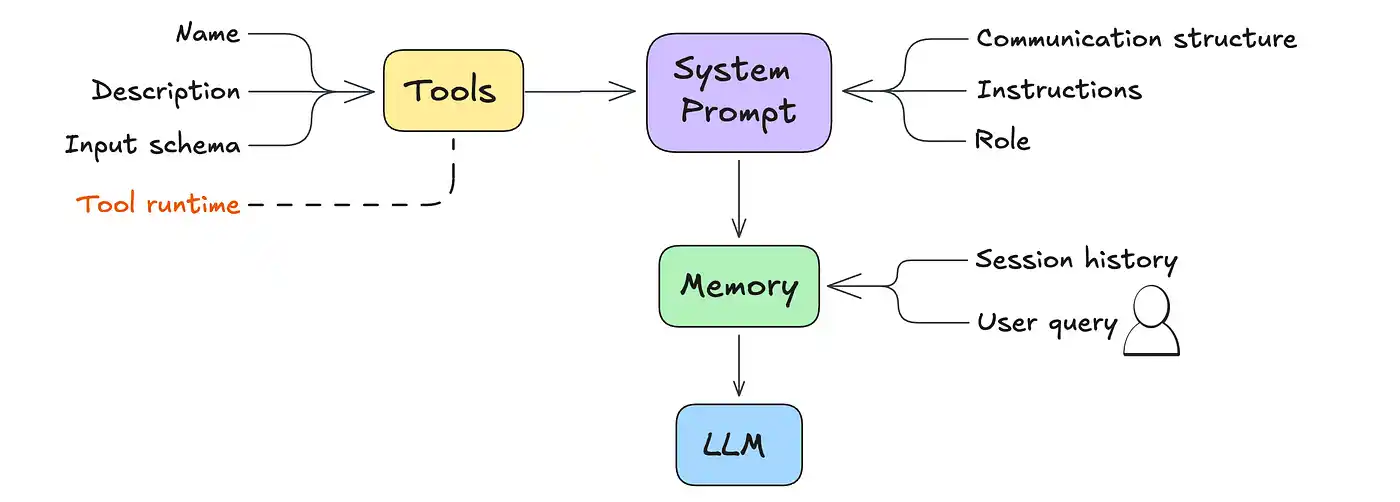
General-purpose LLMs can handle a wide array of tasks without requiring significant adjustments. Their versatility makes them suitable for multiple applications, ranging from natural language understanding to creative text generation.
You can opt for these models when you require more flexibility. Examples of these types of LLMs include GPT-4, and BERT.
GPT-4 can generate coherent, and contextually relevant text and can be used for tasks like question answering, summarization, and accurate text generation.
As for BERT, it can understand the relationship between words in a sentence. It can handle tasks like text comprehension and classification.
Applications
- Conversational AI: These models power chatbots and virtual assistants, enabling them to engage in human-like conversations. ChatGPT, based on GPT-4, is a prime LLM example.
- Content Creation: From writing articles and generating social media posts to producing creative stories, general-purpose models streamline content production.
- General Text Analysis: Tasks like sentiment analysis, text summarization, and language translation are performed effectively by these types of LLM AI.
Overall, General purpose LLMs helps businesses enhance productivity, creativity, and communication with these tools.
Domain-Specific LLMs
Domain-specific LLMs are tailored to specialize in certain fields or industries.
These models are trained on data specific to their domain, making them more accurate for tasks that require expertise in those areas. Let us explore a few domains below.
Healthcare
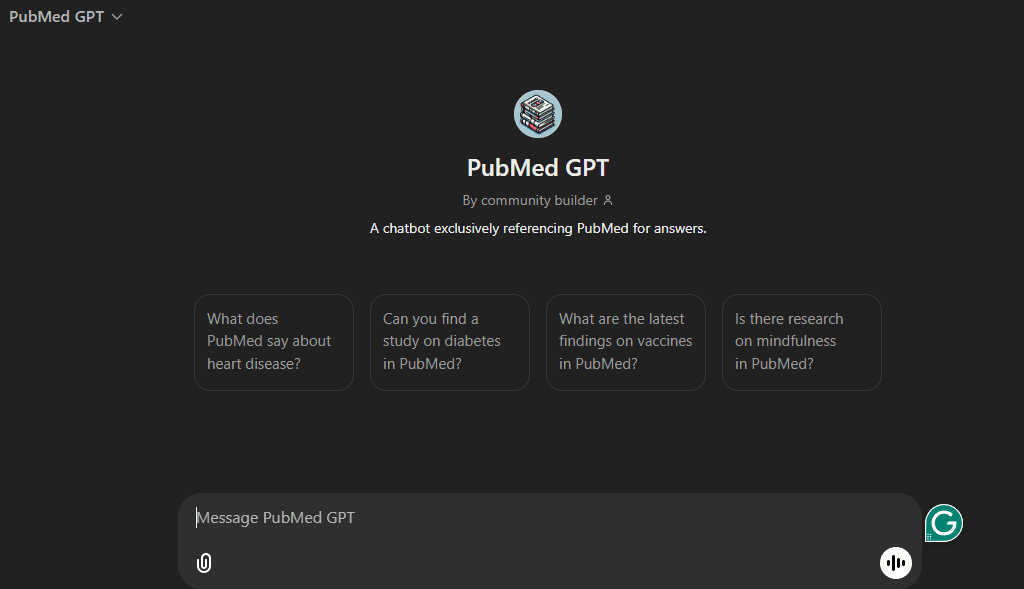
LLMs can be trained on biomedical texts, which allows them to perform medical research and understand complex clinical data. They can also help to review medical literature, recognize patterns, and summarize the findings.
BioBERT and PubMedGPT are good examples of this.
Applications
- Medical Research: Assists researchers in understanding and summarizing vast amounts of scientific literature.
- Clinical Notes Analysis: Helps healthcare professionals interpret and organize clinical notes for better patient care.
LLMs help the healthcare industry by enhancing research efficiency, improving clinical decision-making, and enhancing patient outcomes.
Legal
In the legal field, LLMs like LegalBERT can interpret and process legal language. It focuses on accuracy in legal contexts.
While CaselawGPT is an LLM that can analyze case laws as the name suggests. It can even help in drafting legal documents.
Applications
- Legal Document Review: Enables lawyers to identify errors, inconsistencies, and important clauses in legal documents.
- Case Law Analysis: Provides insights into legal precedents and helps draft contracts or legal arguments efficiently.
LLMs help the legal industry by improving document accuracy, thereby reducing errors.
Finance
In finance, LLMs can perform sentiment analysis for market trends and news articles, and a good example is FinBERT. Another LLM example in finance is BloombergGPT.
It excels in financial text processing, helps to analyze reports, and generates insights for investment decisions.
Applications
- Financial Reports Analysis: Extracts and summarizes critical insights from complex financial documents.
- Sentiment Detection: Helps analysts gauge market sentiment by processing financial news and updates.
LLMs in finance enhance the decision-making process by analyzing reports and providing valuable insights.
Overall, Domain-Specific LLMs are proving to be advantageous to industries by allowing them to make informed decisions, and enhancing their outcomes.
Categorizing Types of LLM Based on License
Categorizing the types of LLM (Large Language Models) based on licensing is vital for understanding their use cases, accessibility, and implementation costs.
This approach helps organizations and individuals choose between customizability, ease of use, or a mix of both. Here is an in-depth look at licensing-based types of AI LLM.
Open-Source LLMs
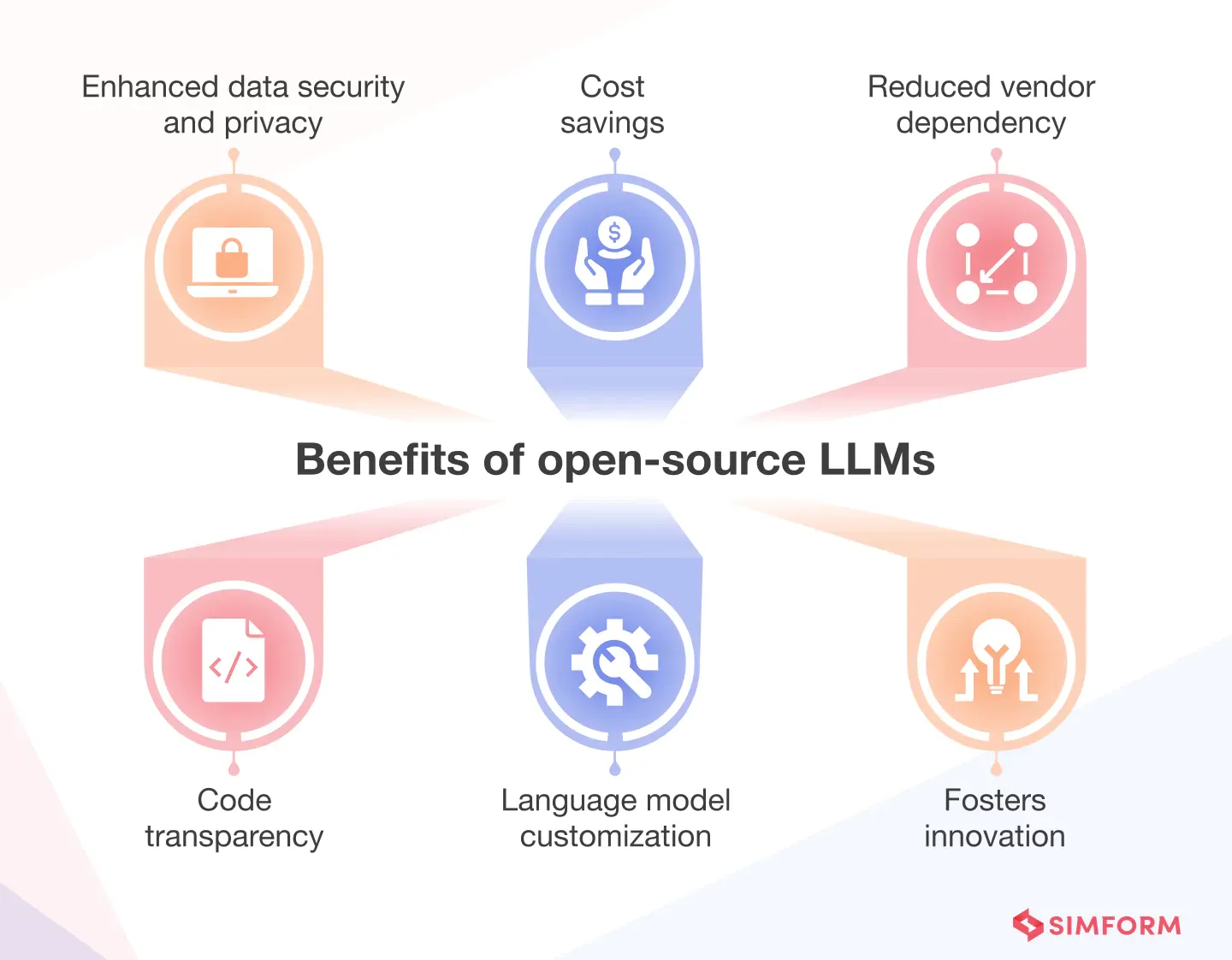
Open-source types of LLM models are freely accessible and allow users to modify their architecture or training processes. These models are often developed collaboratively by research communities and are valued for their flexibility and transparency.
GPT-Neo and BLOOM are two good LLMs examples of this. GPT-Neo is an open-source alternative to GPT models which allows developers to fine-tune and deploy AI for tasks such as text generation and summarization.
BLOOM is a multilingual open-source LLM example built for inclusivity and global reach. It supports over 50 languages, making it suitable for diverse applications.
Advantages
- Customizability: Open-source models offer complete control over training and implementation. Developers can adapt these models to their specific needs or integrate them with custom workflows.
- Cost-Effectiveness: No licensing fees make these models ideal for startups, educational institutions, and non-profits with limited budgets.
- Transparency: The open nature allows users to study the model architecture, ensuring greater trust and facilitating community-driven improvements.
This flexibility of open-source LLMs allows businesses to customize models according to their requirements and also offers cost effective solutions.
Proprietary LLMs
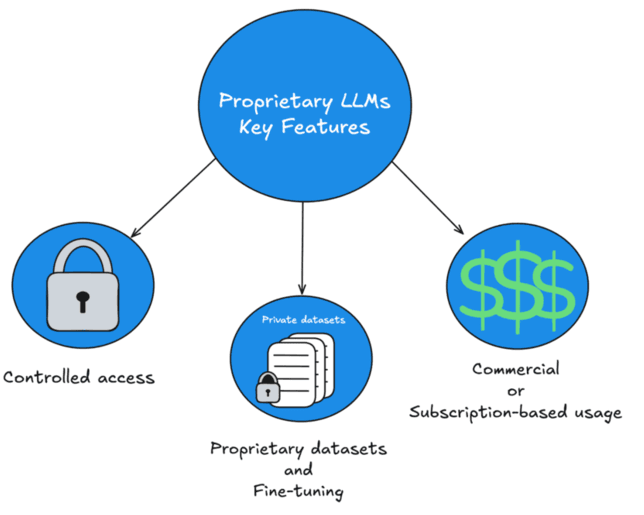
Proprietary types of AI LLM are developed by private companies and are pre-trained to deliver high performance out of the box. These models come with licensing agreements and are often offered as APIs for easy integration.
GPT-4 and Bard are two good examples of this. GPT-4 developed by OpenAI is very advanced and excels in text generation, translation, and question answering.
Bard developed by Google is designed for conversational AI and search-related applications and demonstrates superior contextual understanding in dynamic environments.
Advantages
- High Performance: Proprietary models are trained on extensive datasets using advanced infrastructure, resulting in exceptional performance in a variety of tasks.
- Ease of Integration: These models are designed for plug-and-play use, with APIs and user-friendly interfaces that make deployment straightforward even for teams with limited AI expertise.
Businesses can use Proprietary LLMs if they don't want to build models from scratch. These LLMs are easy to integrate and provide high performance.
Hybrid Models
As the name suggests, hybrid types of LLM AI combine the strengths of open-source and proprietary models. This approach enables organizations to use the advantages of both systems while mitigating their limitations.
Businesses might integrate proprietary APIs, like OpenAI’s GPT-4, for robust natural language processing capabilities while customizing additional features using open-source frameworks like GPT-Neo. This strategy reduces costs and ensures performance for specific use cases.
For example, a business developing a healthcare application could use BioGPT (open-source) to analyze medical data while employing GPT-4 for conversational interfaces.
Advantages
- Flexibility: Enables customization where needed while retaining high performance for critical functions.
- Cost Management: Reduces reliance on costly proprietary solutions for every aspect of the system.
- Scalability: Hybrid models allow businesses to scale efficiently by combining open-source innovations with robust proprietary infrastructure.
Hybrid models provide businesses with the benefits of both open-source and proprietary models enabling efficient scaling and customized applications.
Categorizing Types of LLM Based on Tasks
Categorizing the types of LLM (Large Language Models) by their tasks provides a clear understanding of their specific capabilities.
Each model is designed and trained for particular applications, making it essential to align the task with the right model. Here is an overview of different types of LLM models based on their task focus.
Text Generation Models
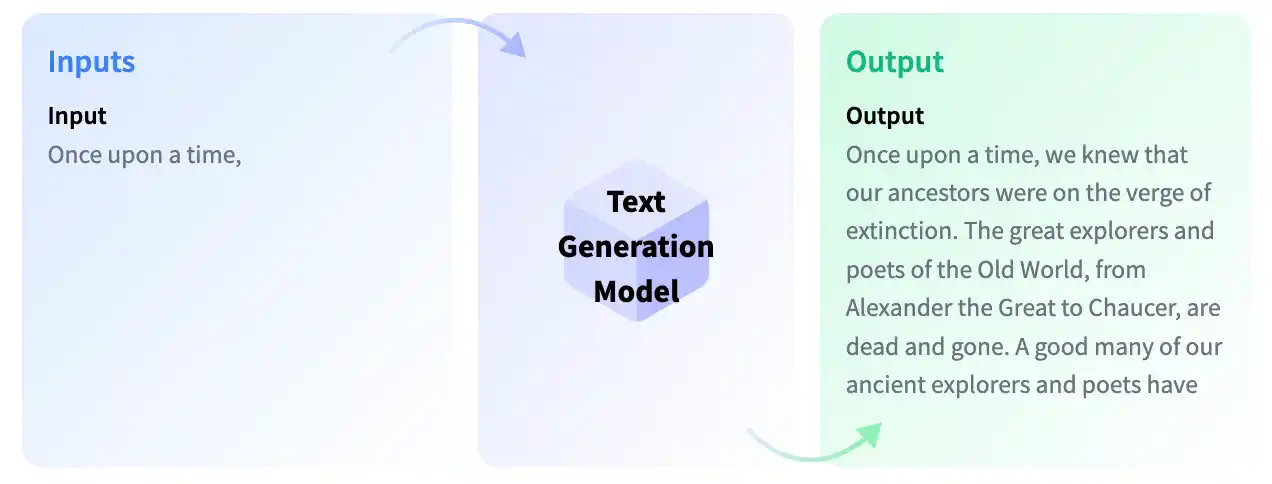
These types of AI LLM excel at creating human-like text, making them ideal for generating content that is both coherent and contextually relevant. GPT-3, and GPT-4 are good examples of this.
GPT-3 with its natural language generation abilities can produce high-quality text for a variety of purposes. GPT-4 is an advanced LLM example that builds on GPT-3’s abilities, providing even more nuanced and accurate text outputs.
Applications
- Creative Writing: Generating stories, scripts, and other forms of creative content.
- Automated Responses: Used in customer service and chatbots to create dynamic and natural-sounding interactions.
- Blog Writing: Assists in creating blog posts or articles, saving time and effort for content creators.
Text generation models help businesses create efficient content and also streamlines workflow, and enhances communication.
Text Classification Models
These models focus on sorting or categorizing text data, making them valuable for analyzing and tagging large volumes of information.
Examples include BERT and RoBERTa. While BERT excels in understanding the context of text for accurate classification tasks, RoBERTa is a robust LLM example optimized for more refined and efficient classification.
Applications
- Spam Detection: Helps filter unwanted or harmful content in email and messaging systems.
- Sentiment Analysis: Determines the tone or sentiment of text, widely used in social media monitoring and market research.
- Topic Tagging: Automatically assigns categories to content for better organization and retrieval.
Text classification models helps businesses make informed decisions and also improves operational efficiency.
Question Answering Models

These types of LLM AI are designed to process queries and provide precise, contextually accurate answers. ALBERT and T5 are a few examples to consider.
ALBERT is a lightweight model optimized for efficiency in question-answering tasks. T5 is versatile and can handle both straightforward and complex question-answering scenarios.
Applications
- Customer Support: Automates responses to frequently asked questions, reducing the workload on human agents.
- FAQ Systems: Powers self-service help desks with detailed and relevant answers.
- Educational Tools: Assists students by answering specific academic or general queries.
Question answering models allows businesses to provide quick, accurate responses enabling them to provide a rich user experience.
Summarization Models
These models are designed to condense lengthy text into shorter, meaningful summaries, focusing on retaining the core message.
Examples include Pegasus and BART. Pegasus helps in abstractive summarization for generating concise yet comprehensive summaries. BART performs both extractive and abstractive summarization efficiently.
Applications
- Article Summaries: Creates brief overviews of news articles or research papers for quick reading.
- Report Condensation: Helps summarize lengthy business or technical reports for better understanding.
Summarization models saves time and efforts for businesses by providing key insights from extensive content.
Suggested Reading:
12 Types of Tasks Businesses Can Accomplish with LLM Platforms
Translation Models
Translation-focused types of LLM models excel in converting text from one language to another with high accuracy and context preservation. mBERT and MarianMT are examples.
mBERT is a multilingual version of BERT, designed for translation and multilingual tasks. MarianMT is optimized for high-quality, domain-specific translations.
Applications
- Multi-Language Support: Enables businesses to communicate with a global audience.
- Internationalization of Content: Translates content for websites, software, or applications to cater to diverse users.
Translation models help businesses connect with customers worldwide by providing them with accurate translations.
Benefits of Choosing the Right Types of LLM Models
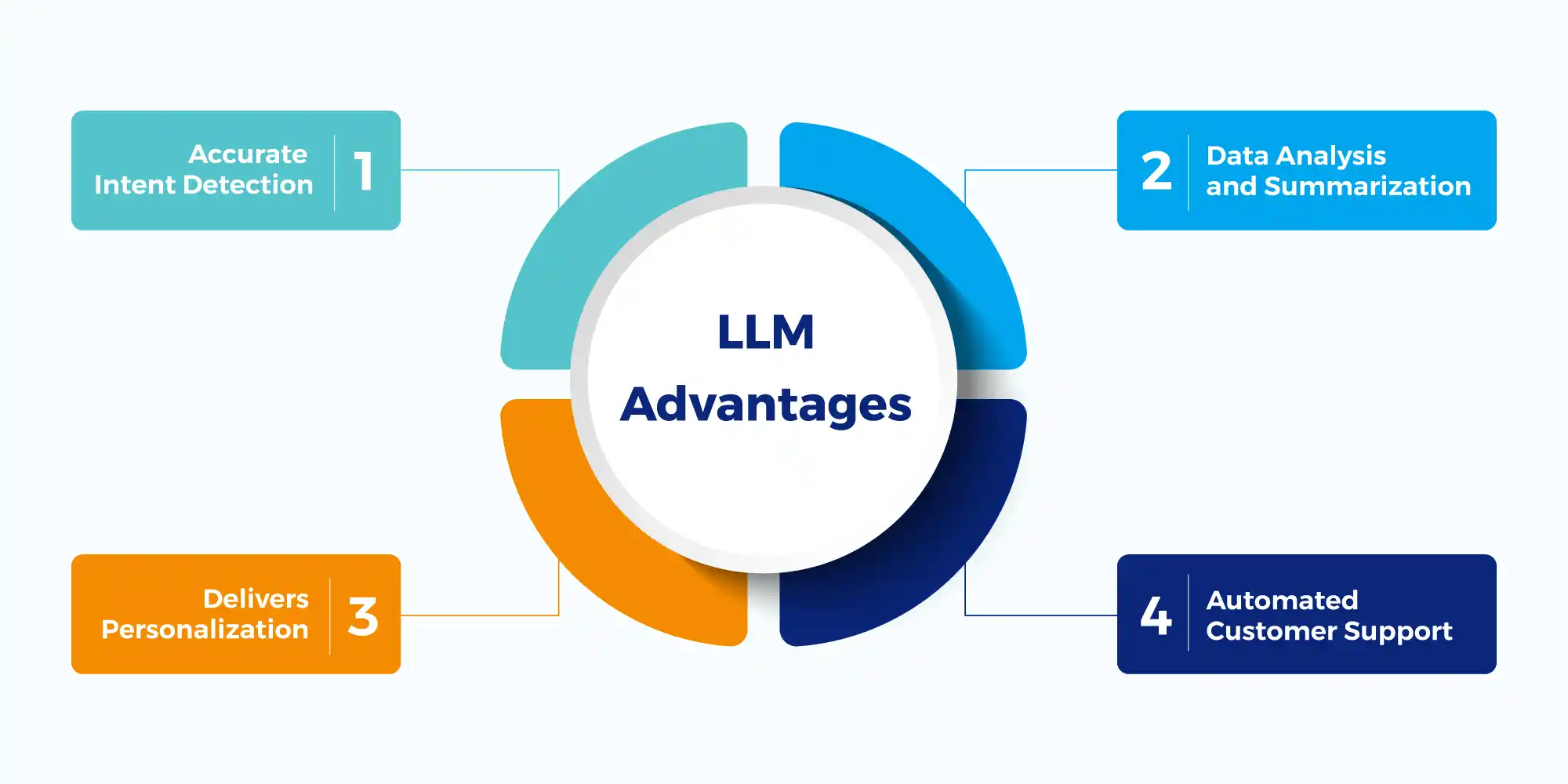
Selecting the right model has direct benefits. Let us explore a few of them.
- Task Alignment: Choosing based on tasks, such as summarization or translation, improves output. For instance, GPT models are a popular LLM example for natural text generation.
- Domain Precision: Models like BioBERT for healthcare or LegalBERT for law ensure accuracy in domain-specific applications.
- Efficiency: Avoid overloading with large models when smaller ones suffice. Not all use cases require the most complex types of AI LLM.
- Compliance and Licensing: Understanding licensing ensures compliance with commercial or research use cases.
Businesses can choose the right LLM model and optimize their performance, enhance accuracy, and achieve their goals effectively.
Applications of Types of LLMs Across Industries
Large Language Models (LLMs) are transforming industries by automating tasks, enhancing efficiency, and improving outcomes.
Understanding the types of LLM and their applications helps unlock their full potential across different sectors. Here is how different types of LLM models are being utilized in key industries.
Healthcare
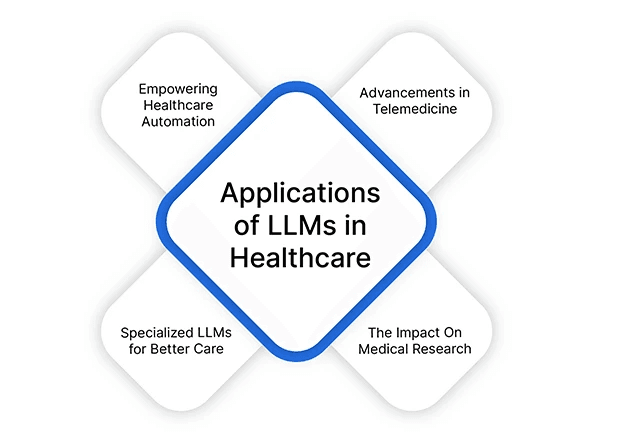
The healthcare industry uses types of AI LLM to address complex challenges and improve patient outcomes. These models analyze vast amounts of medical data with precision.
By utilizing specialized types of LLM models, healthcare systems improve decision-making and enhance personalized treatment plans.
Applications
- Diagnosing Diseases: LLMs analyze medical texts, clinical notes, and patient data to assist in diagnosing conditions more accurately and quickly.
- Drug Discovery: Models process scientific literature and chemical data, identifying potential drug candidates and reducing research timelines.
LLMs in healthcare are enhancing patient care by improving diagnostic accuracy, and enabling more personalized treatment plans.
Education
In education, types of AI LLM are reshaping learning environments by providing personalized and scalable solutions for students and educators.
These tools ensure better access to high-quality education and support adaptive learning experiences.
Applications
- Personalized Tutoring Systems: LLMs can tailor educational content based on individual learning needs, offering explanations, quizzes, and feedback.
- Automating Content Creation: Models like GPT-4, a versatile LLM example, assist in generating textbooks, lesson plans, and assessments, saving time for educators.
LLMs in education are proving to be helpful by automating content creation, providing personalized support, and enhancing the educational experience.
Business
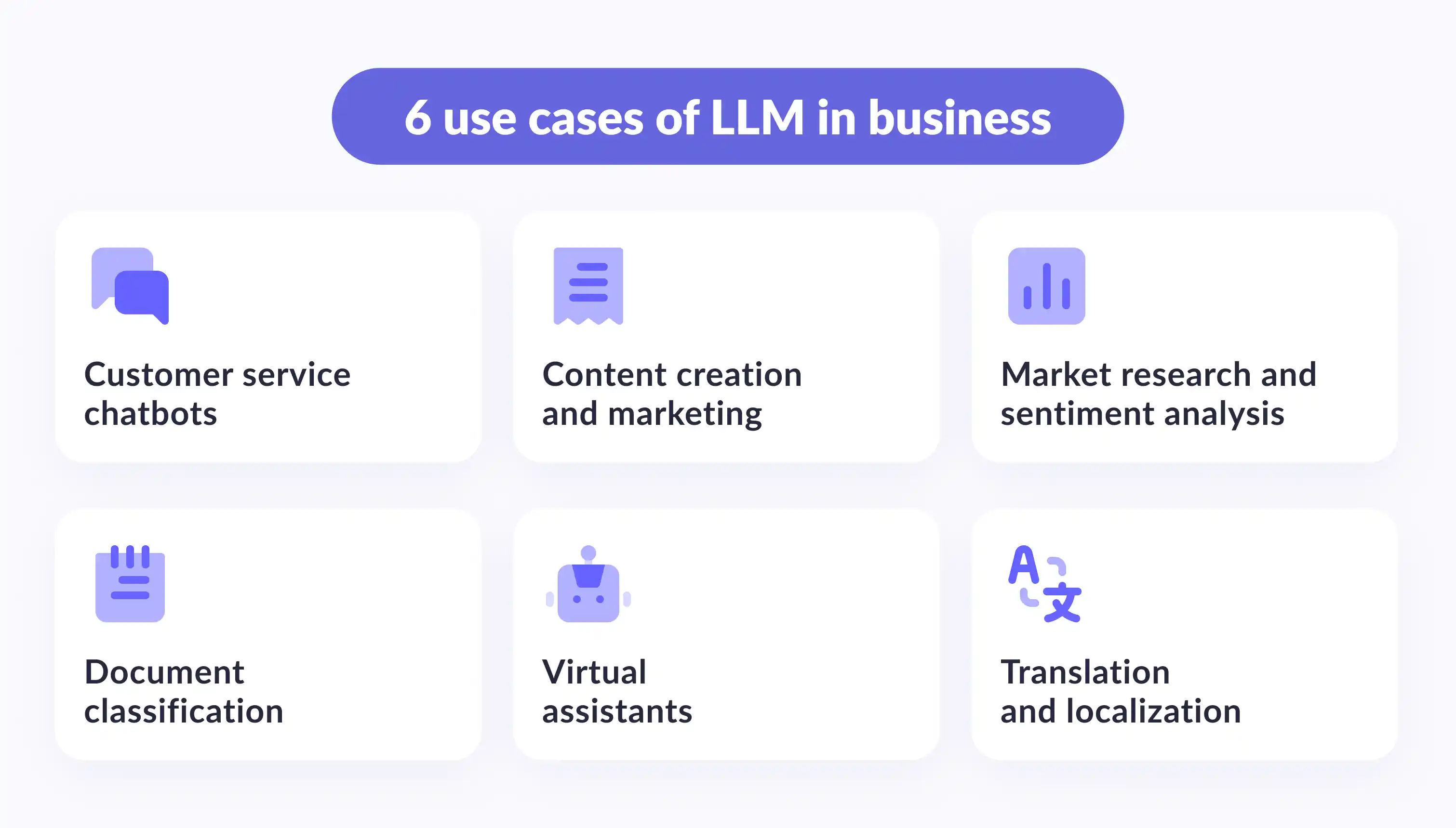
Businesses use types of LLM AI to streamline operations, improve customer experiences, and analyze data efficiently. With such applications, businesses can enhance productivity and focus on innovation.
Applications
- Enhancing Customer Support: Chatbots powered by models like GPT-3 automate responses to common queries, reducing wait times and operational costs.
- Automating Report Generation: LLMs analyze data and produce detailed reports, aiding decision-making in areas like sales and finance.
LLMs in businesses help them optimize process, improve customer service and boost their overall efficiency.
Suggested Reading:
How Large Language Models are Trained? A Complete Guide
Legal Sector
The legal sector benefits from different types of LLM models designed to handle the complexities of legal language and documentation.
These tools ensure accuracy while significantly reducing the manual workload for legal professionals.
Applications
- Streamlining Case Research: Legal-specific models, such as LegalBERT, sift through case laws and legal documents to identify relevant information quickly.
- Automating Contract Analysis: LLMs simplify the review of contracts, identifying key clauses and potential issues, saving time and reducing errors.
LLMs help the legal sector by simplifying research, automating contract analysis, and ensuring greater accuracy in managing complex legal tasks.
Media and Marketing
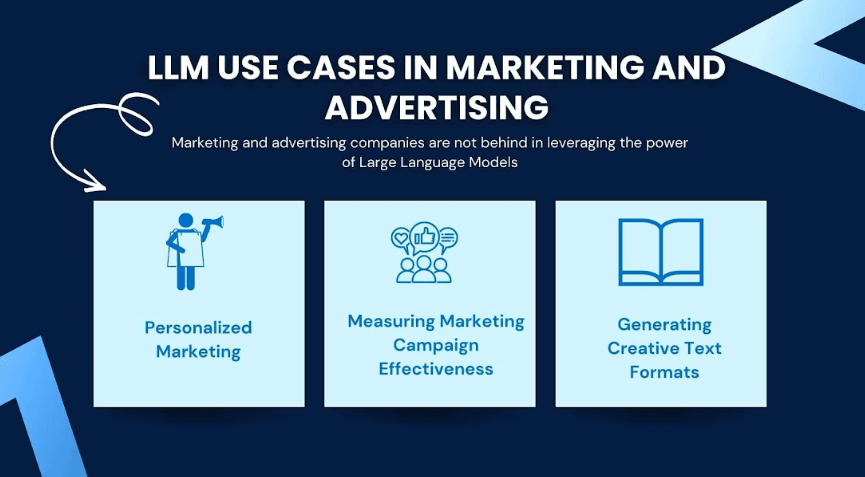
In media and marketing, types of LLM are used to automate creative processes and analyze trends for strategic decision-making. This helps streamline creative efforts and enhance market understanding.
Applications
- Automating Ad Copy Creation: LLMs generate catchy and targeted ad content, ensuring consistency across campaigns.
- Sentiment Analysis: Models like BERT analyze market trends and customer sentiments, enabling brands to tailor their strategies effectively.
LLMs play a vital role in media and marketing by helping them create captivating content, and analyze customer sentiment, thereby boosting their campaign effectiveness and marketing insights.
Factors to Consider When Choosing Different Types of LLM Models
When choosing the types of LLM models, you have to consider certain factors to get the desired results. Let us explore them.
Domain-Specific Requirements
The types of LLM models you choose should align with the domain-specific tasks they need to perform. Models trained on general data may not deliver precise results in specialized fields.
For example, BioBERT is suitable for the healthcare domain, while LegalBERT is appropriate for the legal domain. Tailoring the model to your field ensures higher accuracy and relevance.
Budget Constraints: Open-Source vs. Proprietary
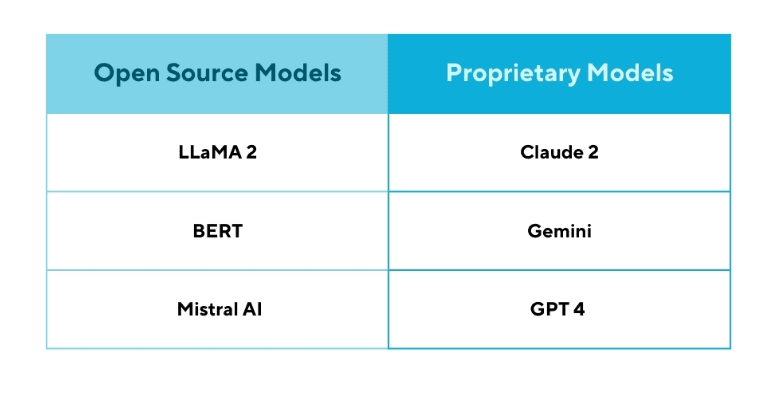
Budget often dictates whether you can opt for open-source or proprietary types of AI LLM. Open-source models like GPT-Neo or BLOOM are cost-effective and offer flexibility but require significant resources to train and deploy.
Proprietary models like GPT-4 provide superior performance and pre-training but involve high licensing and usage costs.
Scalability and Deployment Needs
Evaluate whether the LLM can scale with your needs. Open-source types of LLM AI allow custom modifications for scalability but may demand more effort during deployment.
As for proprietary solutions, though they offer limited flexibility, they can be easier to integrate and scale with pre-built APIs.
Ethical Considerations
Ethics plays a pivotal role in choosing among different types of LLM models. Models trained on biased data can perpetuate harmful stereotypes.
Hence, you have to evaluate datasets and training methods. Privacy is another concern that needs to be addressed. You must ensure compliance with legal and industry standards to protect user data.
Also, you have to monitor data from being misused. Limitations on customization in proprietary models may reduce misuse risks, but open-source models require careful monitoring.
Future Trends in Types of LLM Development
Undoubtedly, LLMs are here to stay. Let us look at the kind of doors they can open for businesses in the future and take them to great heights.
Integration of Multi-Modal Capabilities
Future types of LLM are evolving to handle multi-modal data, integrating text, images, and videos seamlessly.
The possibilities may include a model capable of generating text-based captions for images, and applications in healthcare where text and medical imaging can be analyzed together. This advancement expands AI’s usability across diverse industries.
Advances in Low-Resource Domain Adaptation
New methods are improving the performance of LLMs examples in low-resource domains.
Enhanced algorithms can allow training with minimal data, making AI more accessible for specialized fields or underserved languages. This innovation democratizes AI development, enabling broader adoption.
Enhanced Accessibility for Smaller Organizations
Smaller organizations often face barriers due to high costs or technical requirements.
Future trends aim to reduce these challenges by introducing lightweight types of AI LLM optimized for efficiency and increasing open-source collaborations to provide cost-effective alternatives. This shift ensures that AI tools benefit businesses of all sizes.
Conclusion
Understanding the types of LLM and their applications empowers businesses to make informed decisions and maximize AI’s potential across industries.
From healthcare to marketing, leveraging the right model ensures efficiency, accuracy, and innovation.
For businesses seeking practical AI solutions, platforms like BotPenguin provide a simple way to get started. BotPenguin, a no-code AI chatbot maker, helps businesses streamline customer support, automate responses, and enhance engagement without the need for complex technical expertise.
With tools like BotPenguin, organizations can effortlessly harness the power of AI to improve workflows and customer interactions, staying ahead in today’s dynamic digital landscape.
Frequently Asked Questions (FAQs)
Is LLM a type of generative AI?
Yes, LLMs are a type of generative AI, designed to produce human-like text by predicting and generating sequences based on input data. They excel in tasks like text generation, summarization, and question-answering.
What type of LLM is ChatGPT?
ChatGPT is a general-purpose Large Language Model based on OpenAI's GPT architecture. It specializes in conversational AI, providing context-aware, human-like responses for diverse applications like chatbots, content generation, and virtual assistance.
Is LLM a type of Generative Adversarial Network?
No, LLMs and GANs are distinct. LLMs focus on natural language tasks, while GANs (Generative Adversarial Networks) create realistic images, videos, or data by training two neural networks in opposition to each other.
How are LLMs categorized based on their tasks?
LLMs are categorized by tasks like text generation (GPT-4), classification (BERT), question-answering (ALBERT), summarization (BART), and translation (MarianMT). Each type excels in specific applications, from creative writing to data tagging.
What are the main challenges when using LLMs?
Key challenges include addressing biases in training data, managing high computational costs, ensuring data privacy, and maintaining ethical use. Proper planning and implementation can mitigate these issues while leveraging LLMs effectively.


